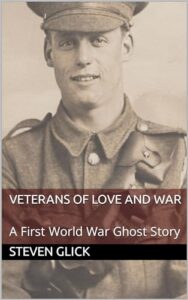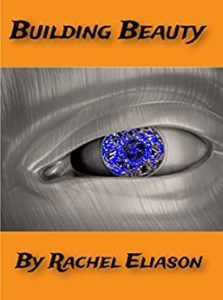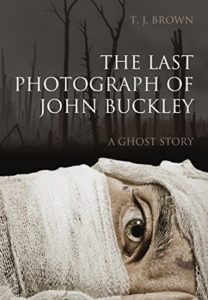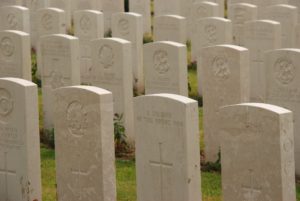 Title: Veterans of Love and War: A First World War Ghost Story
Title: Veterans of Love and War: A First World War Ghost Story
Author: Steven Glick
Publisher: Self-Published
Publication Date: February 13, 2024
Genres: Mystery, Paranormal, LGBTQ, Historical
Length: 15 pages
Source: I received a free copy from the author.
Rating: 5 Stars
Blurb:
Dreams and reality merge in this fateful story of a World War One soldier’s homecoming.
Content Warning: Grief, war, and death. Nothing is graphically described, but World War I was not exactly a cheerful era.
Review:
The destructive forces of war should never be underestimated.
Social conventions can change rapidly over the generations, so I appreciated how clearly Mr. Glick explained exactly what and wasn’t expected from men, women, spouses, and children in the late 1910s as far as how they behaved and what interests they were supposed to have. For example, men were expected to suppress certain emotions no matter what was going on in their lives. These details were important for understanding part of the reason why David, the young soldier who was coming home for a short leave, felt so out of place in the world.
In some other genres, the foreshadowing here would have been too strong, but for this particular tale it was perfect. Claire, David’s mother, had access to so little information about how the war was going or how her son was doing that readers needed these hints in order for her walk home from Christmas shopping to make sense. (It was roughly 1918, after all, and decades away from anything like the Internet to keep families connected during tough times). Figuring out the plot twists in advance wasn’t the point here in my opinion. Instead, I gently followed along as Claire bought some very last minute gifts and worried about her child.
The ending fit the themes of this story nicely. Interestingly enough, it also provided the most mysterious elements of this piece!, so keep reading if the beginning and middle don’t feel like a typical mystery to you. I enjoyed the way the author played around with the expectations of this genre and thought it blended in well with the paranormal and LGBTQ+ themes, too. Sometimes things need to be rearranged a little in order to successfully mix genres together, and it worked quite well here, indeed.
Veterans of Love and War: A First World War Ghost Story was poignant and beautiful.
(If you liked this review or want more paranormal World War I stories in your life, go check out my reviews of An English Heaven and The Last Photograph of John Buckley.)

 Title: An English Heaven
Title: An English Heaven Title: Building Beauty
Title: Building Beauty Title: The Last Photograph of John Buckley
Title: The Last Photograph of John Buckley
 That is the only story I know from that portion of his life. He took everything else with him to the grave. While his body survived the war without any catastrophic injuries, his mental health was severely affected by the things he experienced during those years. He became physically and emotionally abusive and remained that way for the rest of his life.
That is the only story I know from that portion of his life. He took everything else with him to the grave. While his body survived the war without any catastrophic injuries, his mental health was severely affected by the things he experienced during those years. He became physically and emotionally abusive and remained that way for the rest of his life.